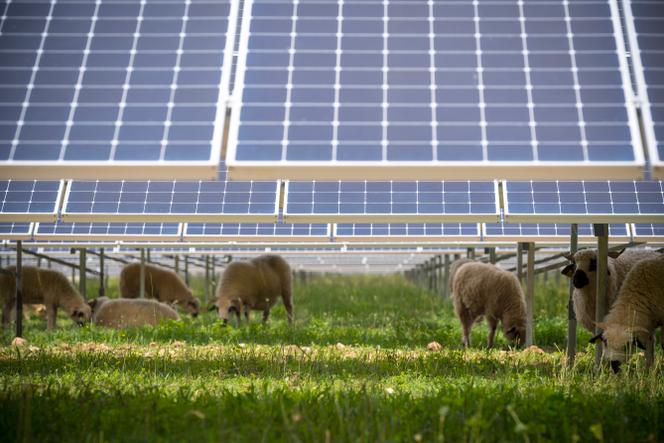- Share on Twitter
- Share on Messenger
- Share on Facebook
- Share by email
- Share on Linkedin
- Copy link

The French bill to accelerate renewable energies, which was adopted by the Assemblée Nationale on Tuesday, January 31, and will be presented to the Sénat on February 7, is a dense and complex document. It contains more than 100 pages, five sections and 34 articles.
Its objective, as stated by the government, is clear: The bill is to allow for a "twice as fast" deployment of renewables, to catch up on France's persistent lag in this area. "The bill will make it possible to achieve this target," said the office of Minister of Energy Transition Agnès Pannier-Runacher.
As it stands, the bill does contain some advances, some of which were long overdue. But in the opinion of both industries and observers, it will not provide a significant enough advance to match the challenge.
Read more Subscribers only French renewable energies law deemed inadequateBesides provisions that could even slow down the development of certain sectors, its impact will depend largely on future regulatory measures and resources available to implement it. Here is an overview of the key measures.
Acceleration zones place mayors at the center of the process
This provision was not included in the initial draft text but is now a key measure. After much discussion, MPs agreed on the establishment of "acceleration zones," which are supposed to address major questions: Where should future wind and solar farms be located, and who will have the final say on their location?
The planning issue is crucial: Roll-out of wind turbines has so far been spread unevenly across the country (three regions account for 60% of the total), which is one of the motives for resistance to the energy source.
In practice, the bill provides for municipalities to identify areas, based on data supplied by the government on the potential for installation and after consultation with the general public. Their proposals will be transmitted to a point person, established by the law, who will produce a map at the departmental level. A regional energy committee will then have to decide whether the identified areas are sufficient to meet the regional renewable energy deployment targets. If so, the municipalities will then also be able to define exclusion zones. "The bill simply says that these zones must 'contribute to achieving' the national objectives from December 2027, which is not an obligation," said Arnaud Gossement, a lawyer working in environmental law.
The MPs did not give a right of veto to the mayors, as right-wing senators wanted, but they did place them firmly at the center of the process since no map can be decided without their agreement. "It is a real change of method," said Michel Gioria, the managing director of the France Wind Energy organization. "The mayors will be in a co-piloting position with the government, which confers a real responsibility on them."
You have 75.33% of this article left to read. The rest is for subscribers only.
Lecture du Monde en cours sur un autre appareil.
Vous pouvez lire Le Monde sur un seul appareil à la fois
Continuer à lire iciCe message s’affichera sur l’autre appareil.
- Parce qu’une autre personne (ou vous) est en train de lire Le Monde avec ce compte sur un autre appareil. Vous ne pouvez lire Le Monde que sur un seul appareil à la fois (ordinateur, téléphone ou tablette).
- Comment ne plus voir ce message ? En cliquant sur « Continuer à lire ici » et en vous assurant que vous êtes la seule personne à consulter Le Monde avec ce compte.
- Que se passera-t-il si vous continuez à lire ici ? Ce message s’affichera sur l’autre appareil. Ce dernier restera connecté avec ce compte.
- Y a-t-il d’autres limites ? Non. Vous pouvez vous connecter avec votre compte sur autant d’appareils que vous le souhaitez, mais en les utilisant à des moments différents.
- Vous ignorez qui est l’autre personne ? Nous vous conseillons de modifier votre mot de passe.
Votre abonnement n’autorise pas la lecture de cet article
Pour plus d’informations, merci de contacter notre service commercial.